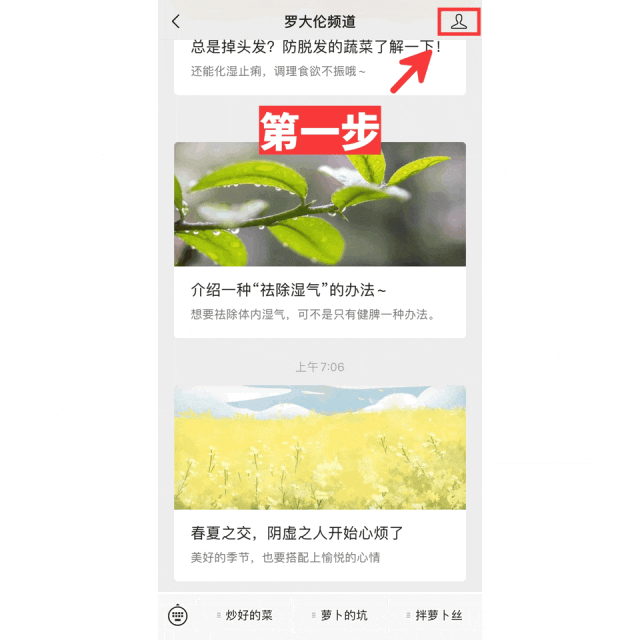
“A series of articles on the ‘Foundations of Traditional Chinese Medicine’ aims to help everyone better learn TCM and break out of the strange cycle of ‘only seeking formulas, not learning medicine.’ We will use vivid and interesting language and fascinating phenomena to unveil the mysteries of TCM, opening the door to a new world, while also allowing you to understand TCM ‘both in its essence and its reasons.’
In the previous article, we briefly introduced several Chinese patent medicines to cope with summer external pathogens, including those for dispelling summer heat, wind-heat, and cold-dampness, which can be considered quite comprehensive. However, after a week of feedback, many people reported that their symptoms did not match these patent medicines. Upon careful consideration, I realized the issue lies with the weather.
Some regions rarely experience heavy humidity, but in the south, the situation is entirely different, with humidity being relatively high throughout the year. Therefore, when considering health and disease topics, we cannot say that everything is the same.

◎ Image authorized by Baotu Network

In summer, people often focus only on cooling down, but little do they know that in the humid and hot summer, the combination of dampness and heat can easily lead to illness. For cold-dampness, we have Huo Xiang Zheng Qi (Agastache Powder), but what about damp-heat? Are there any good methods?
Of course, there are! Today, I will introduce two formulas: San Ren Tang (Three Nut Decoction) and Gan Lu Xiao Du Dan (Sweet Dew Detoxification Pill), both of which are very suitable for external pathogens caused by damp-heat.
However, before introducing the formulas, I must clarify the symptoms of those suffering from damp-heat external pathogens to avoid misapplication and delay in treatment.
First, there is headache, which is a characteristic symptom. Those with damp-heat external pathogens feel a heavy, swollen head, with unclear thinking and dullness. This is due to dampness and turbid qi obstructing the clear orifices and hindering the flow of qi; like all external pathogens, there is definitely a feeling of cold aversion, even in warm weather, one may feel averse to wind and cold.
Secondly, the body feels particularly heavy, lacking energy, feeling lazy, and even experiencing muscle soreness. This is because dampness obstructs the flow of the meridians, pervading the three burners, leading to poor qi circulation, hence the heaviness; the complexion is not the usual rosy hue but may appear pale yellow, especially noticeable in dim light or certain angles; there is no appetite, and one may feel nauseous and bloated after eating; some people experience increased fever in the afternoon as the yang qi begins to weaken and the interference of dampness becomes more apparent.
Finally, there are some other symptoms. The tongue coating is thick and greasy, covering the entire tongue, although some may have a thinner white coating, but the common feature is a full coating; there may also be slippery coating, meaning there is excess saliva on the tongue.

01
San Ren Tang
“Is there still a need for a formula for damp-heat? Just use lotus leaf tea or red bean and coix seed soup!” While these remedies are not entirely useless, when the damp-heat in your body has developed to a certain extent, revealing signs of illness, these dietary methods for dispelling dampness may not be strong enough. Therefore, to cope with external pathogens, we still need to rely on formulas.

◎ Image authorized by Baotu Network
Let’s first discuss San Ren Tang. This formula was written by the Qing Dynasty TCM master Wu Ju Tong in “Wen Bing Tiao Bian” and is used to address damp-heat conditions, specifically for cases where dampness is more pronounced and heat is not as severe. It is now commonly used to treat damp-heat symptoms among external pathogens.

The recommended composition of San Ren Tang is: 9g of Xing Ren (Apricot Kernel, 杏仁) (crushed, added later), 6g of Bai Dou Kou (White Cardamom, 白蔻仁) (crushed, added later), 30g of Sheng Yi Yi Ren (Job’s Tears, 生薏苡仁), 6g of Ban Xia (Pinellia, 法半夏), 6g of Tong Cao (Rice Paper Plant, 通草), 6g of Zhu Ye (Bamboo Leaf, 竹叶), and 3g of Hou Po (Magnolia Bark, 厚朴). The original formula included Shi Gao (Gypsum), which has been omitted here.
The method of preparation is to boil the herbs that are not marked as “added later” on high heat for twenty minutes, then add the “added later” herbs and simmer for another five to ten minutes before turning off the heat and letting it steep for five minutes. The decoction can then be strained. Drink three times a day, one small bowl each time.

“I don’t see what’s so special about this formula?” Ah, you may not know, without some unique skills, how could I dare to share this formula with everyone? The unique skill of San Ren Tang is its ability to “disperse and eliminate” damp-heat.

This method refers to the “dispersing and eliminating the upward and downward forces” method proposed by Ye Gui in “Wen Re Lun”. The basic herbs used include “Xing, Po, Ling, etc.”, which open and promote the upper burner, smooth the middle burner, and drain the lower burner to disperse and eliminate damp-heat from the three burners. In simple terms, it utilizes the properties of the herbs to simultaneously attack damp-heat from the upper, middle, and lower burners, thus achieving the goal of dispelling damp-heat.

Which herbs in the formula have this capability?

Wu Ju Tong said, “Treat the upper burner with light herbs.” What does this mean?
It means that to address issues in the upper burner, one must use light herbs, which act like feathers in the body, and feathers have a characteristic of easily floating upwards, so light herbs easily reach the upper burner. Xing Ren (Apricot Kernel) is considered a light herb, which can promote lung function and ensure the smooth flow of lung qi. When the lung’s dispersing function is normal, the lung, which governs the skin and hair, can expel damp-heat from the body through the skin. When the damp-heat trapped in the skin is eliminated, the upper burner naturally becomes unobstructed.
What about the middle burner?
Of course, it is Bai Dou Kou (White Cardamom). Bai Dou Kou is not only a medicinal herb but also a spice. It has a unique fragrance that can transform turbidity, awaken the spleen, and promote qi circulation. Additionally, stimulated by Bai Dou Kou, the spleen and stomach will be activated, and once the spleen and stomach start to function, the clear will rise and the turbid will descend, naturally dispelling dampness.
However, this is not enough. Although our body has dampness in the upper, middle, and lower burners, the main dampness is in the middle burner, as the spleen and stomach are the source of all damp evils. Therefore, regulating damp-heat in the middle burner is quite challenging, and Bai Dou Kou alone may be insufficient, so the formula also includes Hou Po and Ban Xia.
Hou Po (Magnolia Bark) is bitter and warm, which promotes circulation and dries dampness. Its characteristic of promoting qi is strong in a downward direction, which can expel dampness from the middle burner through bowel movements. Ban Xia (Pinellia) can dry dampness and transform phlegm. The reason for adding Ban Xia is that prolonged dampness will inevitably lead to phlegm formation, and once phlegm is formed, it becomes even harder to eliminate. Therefore, Ban Xia is used to prevent phlegm-damp from further harming the body.
Finally, we arrive at the lower burner, where Sheng Yi Yi Ren (Job’s Tears) reigns. According to “Ben Cao Xin Bian”: “Yi Ren is best at promoting urination without damaging the true yin qi. For those with excess dampness in the lower body, it is most suitable to use it. Depending on the severity of the illness, adjust the dosage, and it will not harm yin and yang, making it easy to dispel damp diseases. Therefore, when encountering water-damp symptoms, using one or two taels of Yi Ren as the main herb, along with flavors that strengthen the spleen and dispel dampness, has never failed to yield results. However, if its properties are diluted and used lightly, it will be of no benefit.” It is evident that Sheng Yi Yi Ren’s most prominent ability is to promote urination and drain dampness, particularly from the lower burner.

Now you all know which three nuts the “San Ren” refers to, right? They are Xing Ren (Apricot Kernel), Bai Dou Kou (White Cardamom), and Sheng Yi Yi Ren (Job’s Tears). If you experience headache, cold aversion, body heaviness, chest tightness, white tongue without thirst, and a slippery pulse, you can use this formula. However, it should be avoided in cases of yin deficiency with little fluid or severe heat over dampness.

02
Gan Lu Xiao Du Dan
Different individuals have varying resistance to pathogens, which is why some people experience more severe damp-heat conditions than others. For such individuals, relying solely on San Ren Tang is insufficient, so I recommend another formula: Gan Lu Xiao Du Dan.

◎ Image authorized by Baotu Network
Damp-heat is quite troublesome because damp-heat evil has a significant characteristic: it is sticky, even stickier than pure dampness.
For example, if pure water-damp evil is like a bottle of soda spilled everywhere, stepping on it after a while will feel a bit sticky. However, if you pour soda into a pot and then add a big fire underneath, oh my, those who often cook know how hard it is to clean up. What I mean is that Gan Lu Xiao Du Dan is suitable for those who are “under a big fire.”
The formula Gan Lu Xiao Du Dan first appeared in a book called “Yi Xiao Mi Chuan,” attributed to Ye Tian Shi, a remarkable TCM practitioner of the Qing Dynasty.
Its composition includes: 450g of Fei Hua Shi (Talc), 300g of Dan Huang Qin (Scutellaria, 淡黄芩), 330g of Mian Yin Chen (Eclipta, 绵茵陈), 180g of Shi Chang Pu (Acorus, 石菖蒲), 150g each of Chuan Bei Mu (Fritillaria, 川贝母) and Mu Tong (Akebia, 木通), and 120g each of Huo Xiang (Agastache, 藿香), Lian Qiao (Forsythia, 连翘), Bai Dou Kou (White Cardamom), Bo He (Mint, 薄荷), and She Gan (Belamcanda, 射干).
“Such a large quantity, can it be consumed at once?” Of course not; generally, each dose consists of 9g of the mixed powdered herbs. However, it is still recommended to purchase the patent medicine Gan Lu Xiao Du Wan from a pharmacy, as it is more convenient.
Gan Lu Xiao Du Dan is suitable for damp-heat epidemic when the evil is in the qi level, and the manifestations of damp-heat epidemic include heavy dampness and significant heat in the body. Specific symptoms include fever, fatigue, chest and abdominal distension, limb soreness, sore throat, short and red urination, red tongue with yellow coating, either thick and greasy or dry and yellow.
This formula uses a particularly large amount of Hua Shi (Talc), which is a mineral that can promote urination, drain dampness, and clear heat and detoxify, especially for clearing summer heat. Therefore, when experiencing heavy summer heat and dampness, using Hua Shi can help expel this heat evil through urination.
Mian Yin Chen can clear heat from the liver and gallbladder, also expelling heat from the liver and gallbladder through urination; Dan Huang Qin can clear heat from the upper burner, especially lung heat; in this formula, Dan Huang Qin is paired with Lian Qiao, a commonly used herb for clearing heat and detoxifying; then there is She Gan, which benefits the throat and is also a heat-clearing herb; followed by Bo He, which releases the evil and is a pungent and cool herb that can push the evil upwards; then Chuan Bei, which is also a cooling herb; and finally, the detoxifying Mu Tong, which clears heat, drains dampness, and promotes urination, effectively addressing painful urination.
Next is Shi Chang Pu, which dispels dampness, and once the dampness is removed, the orifices can be opened. Shi Chang Pu also transforms phlegm, regulates qi, invigorates blood, and disperses wind. Huo Xiang and Pei Lan are both aromatic herbs that promote qi circulation.
The herbs in this formula can actually be divided into two groups: one group for dispelling dampness includes Bai Dou Kou, Huo Xiang, Shi Chang Pu, Mian Yin Chen, Hua Shi, and Mu Tong. The other group for clearing heat, detoxifying, and benefiting the throat includes Dan Huang Qin, Lian Qiao, Chuan Bei Mu, She Gan, and Bo He.

◎ Image authorized by Baotu Network
Why is it divided this way?
Because damp and heat are opposing evils in nature. One is water, and the other is fire. Now that water and fire are mixed together, to clear heat, one must use cold, which inevitably exacerbates dampness; to dispel dampness, warmth is needed, which will promote heat evil, making it difficult to treat.
However, by dividing the herbs in this formula, damp and heat are separated. When dampness is removed, heat is isolated; when heat is removed, dampness has no support. By addressing them separately, it becomes much easier, which is the unique skill of Gan Lu Xiao Du Dan.
How does this formula differ from San Ren Tang? When should it be used?
Gan Lu Xiao Du Dan is heavier in dosage than San Ren Tang, and its heat-clearing power is stronger than that of San Ren Tang, making it a more potent version that enhances the heat-clearing aspect, so Hua Shi cannot be omitted.
Using Gan Lu Xiao Du Dan can be indicated by the following symptoms: red tongue, yellow greasy coating, throat discomfort, cough and wheezing, chest tightness, and abdominal distension.
Of course, aside from damp-heat external pathogens, conditions such as oral ulcers, bad breath, sore throat, cough and wheezing, gastritis, hepatitis, jaundice, hair loss, turbid urination, sores, and rheumatism can also be tried with this formula as long as they present as damp-heat syndrome and are relatively severe.
That concludes the content on damp-heat external pathogens. If you have any related questions, feel free to leave a comment.
— THE END —
Related Articles Review
❀ What formulas should be used for “Er Yang”? How does it differ from “Yi Yang”?
❀ The small peak of “Er Yang” is coming soon; those with heavy dampness should take note!
For more related articles, please search within the public account.
❀ Article Search Guide
✿ Article by: Yuan Li
✿ Editor: Yuan Li
✿ Reviewer: Zi Ye
✿ All images in the text are credited; please do not use without authorization.

Dr. Luo’s video account – 【Luo Da Lun Channel】 is now officially launched! In the future, we will continuously provide exciting video content for everyone, welcome to follow, so you can see Dr. Luo’s videos in a timely manner and not miss future live broadcasts (possibly)~

Dr. Luo says, reading articles while watching videos is even better!
Dr. Luo’s new Douyin account “Luo Da Lun Talks about National Studies” is online! This account shares insights on national studies and the wisdom of life. New and old friends are welcome to follow and support!
Follow Douyin “Luo Da Lun” to watch Dr. Luo’s live broadcasts, which take place every Monday to Friday from 8 PM to 9 PM, covering national studies and the I Ching.
Due to Douyin platform regulations, please do not consult TCM-related content in the live broadcast room. Everyone is welcome to watch.

Essay Contest
If you also have a story related to TCM, you can write it down and submit it to us at any time. Please submit your article in Word document format to our email.
Please ensure that the submitted article is original and include your WeChat nickname, name, phone number, address, and other contact information. After screening, we will obtain authorization from the author to publish it in the channel’s column. Once published, we will send you a signed book by Dr. Luo!
Thank you for your positive feedback. We look forward to you sharing your story with TCM with us and more people, allowing more individuals to experience the charm of Chinese culture.

Dr. Luo’s official WeChat public account includes the following four, please scan the QR code to follow. Any others are imitations, please do not be deceived!

Luo Da Lun Channel
WeChat ID: luodalunpd
Da Lun Academy
WeChat ID: Dalun_sy


Da Lun Parenting Talk
WeChat ID: dalun_yes
Dr. Luo
WeChat ID: Drluodalun

🔹 The copyright of original articles in this public account belongs to this account. If you need to reprint, please leave a message to the editor and indicate the source. Commercial use is prohibited.
🔹 The articles reprinted by this public account are for learning and communication purposes only and fall within the scope of fair use. If there are errors in the attribution of images, data sources, or text copyright, please inform the editor, and they will be corrected or deleted immediately.
🔹 This public account has the portrait rights of Dr. Luo. Any unauthorized use will be pursued legally.
🔹 This public account is legally supported by Beijing Zhongzhe (Shenyang) Law Firm, and will pursue legal responsibility for any unauthorized reprints, commercial use, and refusal to delete posts after warnings.

